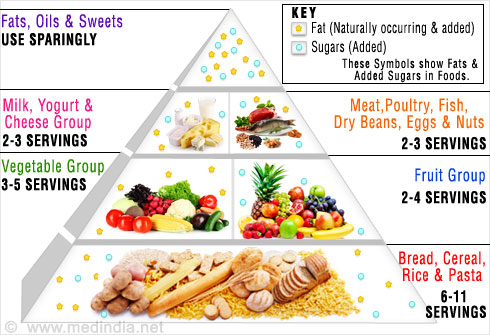
The provision of protection services to the elderly is a national issue. The National Committee for the Prevention of Elder Abuse, on behalf of the National Center on Elder Abuse, conducted a recent survey of all state Adult Protective Services programs. It revealed that elder abuse cases rose dramatically in 2001. Even though these numbers represent only a portion of the total number to be analysed, the study shows that it can be difficult to draw correct conclusions from limited data.
Adult Protective Services (APS) are public response programs designed to prevent and respond to reports of abuse of vulnerable adults. These programs are run by social workers and are located in human service organizations. They are responsible for conducting investigations, developing case plans and counseling clients. These activities give vulnerable adults the opportunity to live independently. Service delivery is complicated. You must find a way to both respect vulnerable adults' right to self-determination and provide a full range of services.

APS defines and targets different groups in each state. There are also no universal definitions. This has created a vast array of state-level and local APS program options. However, most states have followed a common model of protective service delivery. This means that most states have a common model of protecting adult victims. However, the lack of leadership at the national level is evident. This creates a complicated system with many local programs. They often have different identities, delivery methods, and standards.
Researchers, practitioners, activists, and advocates have all found it difficult to gather accurate data regarding the number and nature cases being served through local APS programs. There are two primary reasons for this: (1) the lack of a state-mandated reporting system; and (2) the lack of uniform definitions. Accordingly, the number of APS elder-abuse reports has increased significantly over ten years. This is more than the growth in the elderly population.
APS workers argue that excluding elder abusing from the definition of abusive would reduce the resources available to service delivery and marginalize people who are self-neglecting. Research shows that self-neglecting adults make up the majority of APS cases. Moreover, self-neglect can become a complex criminal investigation.
The National Committee for the Prevention of Elder Abuse has surveyed 472,813 reports of vulnerable adult abuse. The study identifies core areas of mistreatment, which include physical abuse, neglect, emotional abuse, and property exploitation. There are many other cases that go unreported, even though the number of elder abuse cases has increased significantly in the last decade. There are a few studies that examine the effectiveness of APS, but they are rare.

The National Association of Adult Protective Services Administrators (NAAPSA) is a non-profit volunteer organization that supports the mission of improving the availability of services for vulnerable adults. Through its members of the local APS administrators, the organization is able to have a national presence. The National Academy on an Aging Society published the organization's magazine. This society aims for a better understanding of aging and guidance for people caring for older adults.
FAQ
How do I get enough vitamins for my body?
You can obtain most of your daily requirement through diet alone. Supplements can be beneficial if you are missing a specific vitamin. You can take a multivitamin supplement that contains all the vitamins you need. You can also get individual vitamins at your local drugstore.
If you are concerned about getting enough nutrients, talk to your doctor about what foods contain the best sources of vitamins. Some examples of rich sources of vitamins E and K include dark green leafy vegetables, such as spinach.
Ask your doctor if you're not sure how many vitamins you should take. He or she will recommend the appropriate dosage based on your medical history and current health status.
How often should i exercise?
It is important to exercise for a healthy lifestyle. However, there isn't a set amount of time you must spend working out. It is important to find something you enjoy, and then stick with it.
You should aim to do 20-30 minutes of moderate intensity exercise three times per week. Moderate intensity means you'll still be breathing hard after you've finished. This type of exercise burns approximately 300 calories.
Walk for 10 minutes four days a semaine if you prefer walking. Walking is low impact and easy on your joints.
Jogging three times a week for 15 mins is enough if you want to run. Running is a great way of burning calories and building muscle tone.
Begin slowly if your are new to exercising. Start with just 5 minutes of cardio a few times a week. Gradually increase the duration until you reach your goal.
Does being cold give you a weak immune system?
Being cold gives you a weaker immune system because when you are cold, your body produces less white blood cells which fight infections. Being cold can make you feel more comfortable because your brain releases endorphins which help reduce pain.
Statistics
- nutrients.[17]X Research sourceWhole grains to try include: 100% whole wheat pasta and bread, brown rice, whole grain oats, farro, millet, quinoa, and barley. (wikihow.com)
- WHO recommends reducing saturated fats to less than 10% of total energy intake; reducing trans-fats to less than 1% of total energy intake; and replacing both saturated fats and trans-fats to unsaturated fats. (who.int)
- The Dietary Guidelines for Americans recommend keeping added sugar intake below 10% of your daily calorie intake, while the World Health Organization recommends slashing added sugars to 5% or less of your daily calories for optimal health (59Trusted (healthline.com)
- Extra virgin olive oil may benefit heart health, as people who consume it have a lower risk for dying from heart attacks and strokes according to some evidence (57Trusted Source (healthline.com)
External Links
How To
What does the word "vitamin" mean?
Vitamins are organic substances found naturally in food. Vitamins allow us to absorb nutrients from food. Vitamins cannot come from the body so food must provide them.
There are two types if vitamins: water soluble, and fat soluble. Water-soluble vitamins dissolve quickly in water. Some examples include vitamin C,B1 and B2 vitamins (thiamine), B2 and riboflavin, B3 and niacin, B6 vitamins (pyridoxine), B6 vitamins (niacin), folic acids, biotin, pantothenic acids, and Choline. Fat soluble vitamins are stored in the liver and fatty tissue. Some examples include vitamin D and E, K, A, beta carotene, and A-vitamins.
Vitamins are classified based on their biological activity. There are eight major vitamin groups:
-
A - Essential for healthy growth and health maintenance.
-
C is important for nerve function and energy production.
-
D - Vital for healthy bones and teeth
-
E is needed for good reproduction and vision.
-
K - Essential for healthy muscles and nerves.
-
P - essential for strong bones, teeth and tendons
-
Q - Aids in digestion and absorption.
-
R - Required for red blood cell production
The recommended daily allowance of vitamins (RDA), varies depending upon age, gender, physical condition, and other factors. RDA values are set by the U.S. Food and Drug Administration (FDA).
For adults aged 19 or older, the RDA of vitamin A is 400mg per day. However, pregnant women need 600 micrograms per day because it is important for fetal development. Children ages 1-8 require 900 micrograms per day. For infants younger than one year, 700 micrograms are required daily. However, this number drops to 500 micrograms each day for children aged 9-12 months.
Children ages 1-18years who are obese need 800 micrograms per day while those who are overweight need 1000 micrograms per day and children who are underweight need 1200 micrograms per day to meet their nutritional needs.
Children aged 4-8 who have anemia are required to consume 2200 micrograms of Vitamin C daily.
2000 micrograms per person is necessary for general health. Due to their increased nutrient needs, pregnant and breastfeeding women need 3000 micrograms daily.
Adults over 70 require 1500 micrograms each day, since they lose approximately 10% of muscle mass each decade.
Women who are pregnant or nursing need more than the RDA. Pregnant mothers need 4000 micrograms per daily during pregnancy and 2500 after giving birth. Breastfeeding mothers need 5000 micrograms per day when breast milk is being produced.